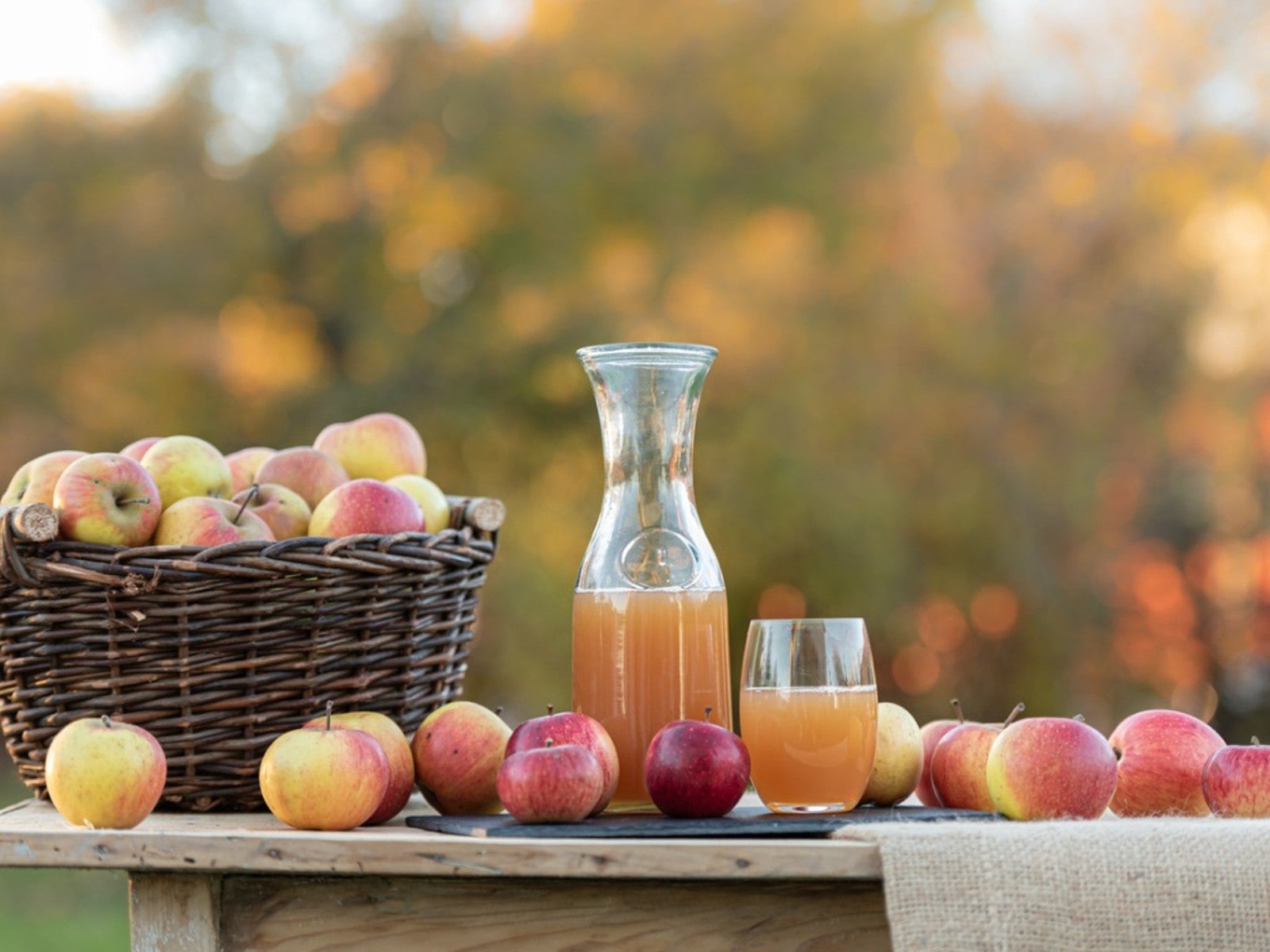How To Make Apple Cider From Homegrown Apples

If you have a bounty of apples it might be time to learn how to make cider. Some homemade apple cider recipes have been handed down for generations but the general gist of them all remains the same. A family fun project, read on to learn how to make hot apple cider.
Best Apples for Cider
Choosing the best apples for cider is a matter of taste. If you prefer your cider to be on the sweet side then opt for sweet apples such as Cortland, Fuji, Gala, Golden Delicious, or Red Delicious. If you like your cider tangy, choose tart apples such as Braeburn, Jonathan, McIntosh, or Pink Lady.
Of course you can also use a blend of both for a tangy/sweet crowd pleasing combination.
Apples for cider should be firm and ripe but mature. Apples do not have to be pristine but you will need to cut out any rotting areas. Areas of apple that are rotting can cause the juice to ferment too rapidly and ruin your cider.
How Many Apples to Make a Gallon of Cider?
It will take about 30 to 40 apples (depending upon size) to make a gallon of cider. If you are purchasing your apples by the bushel, a bushel contains about 125 apples more or less, so a bushel of apples will yield 3 to 4 gallons (11-15 L.) of cider.
About Cider Safety
There is a fairly small but realistic risk that unpasteurized cider may be contaminated with food borne pathogens like E. coli. Some people like the elderly, children, or those with underlying health issues may be more susceptible to bacteria than others.
Commercial cider producers must go through rigorous testing to ensure their produce is safe for consumption but at home producers can mitigate the risks as well by boiling or pasteurizing cider prior to consumption.
Gardening tips, videos, info and more delivered right to your inbox!
Sign up for the Gardening Know How newsletter today and receive a free copy of our e-book "How to Grow Delicious Tomatoes".
How to Make Apple Cider with a Press
The traditional method for extracting juice from apples is by using a crusher and press. You may have seen these at commercial apple orchards or may even have your own.
The first order of business is to wash the apples, core them, and cut into quarters. If there are any rotting areas be sure to cut them out completely. Load the prepared apple into the crusher. When the crusher is full enough transfer the crushed apples to the press and using the handles press the juice from the apples.
Then squeeze the juice through a jelly bag to remove any remaining particles. Heat the juice to 160 degrees F. (71 C.) to eliminate any pathogens. Allow the juice to cool and then pour into clean, new, or recycled juice bottles. Keep refrigerated and consume within five days or freeze for later use.
Alternative Method for Making Apple Cider
Not everyone has access to an apple press but you can also make cider using a juicer. In this case you don’t need to core the apples but you do need to cut out any rotting areas and cut the fruit into quarters.
Start juicing until the pulp container begins to get full. Squeeze the pulp through a clean towel or cheesecloth and collect the juice. The remaining pulp should be dry and is then referred to as pommace which can be composted.
As above, heat the juice to pasteurize it and then bottle as above.
How to Make Hot Apple Cider?
Nothing smells quite as good as hot apple cider simmering on the stove on a chilly day. There are a few different additions to apple cider depending upon the recipe but the basic recipe is as follows.
- 4 cups (950 ml.) unsweetened apple juice
- several black peppercorns
- ½ teaspoon (2 g.) whole cloves
- ¼ teaspoon (1 g.) nutmeg
- a pinch of orange zest
- *Optional: pure maple syrup to sweeten
You may add more or less of the spices and zest to suit your palate. The same goes with the maple syrup. Some people like hot apple cider sweet and others tart. Some people put cinnamon sticks or allspice berries and even lemon peel into their hot apple cider. There’s no right or wrong way to spice up your cider, it’s all up to your palate.

Amy Grant has been gardening for 30 years and writing for 15. A professional chef and caterer, Amy's area of expertise is culinary gardening.
-
 Create A Romantic Garden Straight Out Of Bridgerton: Regency Era Romance In Your Garden
Create A Romantic Garden Straight Out Of Bridgerton: Regency Era Romance In Your GardenTry some romantic garden ideas straight out of Bridgerton. Flowers and gardens in the Regency era were lush and charming and you can get the same look!
By Bonnie L. Grant
-
 Moody Blooms For Spring: 8 Types Of Black Flowers To Add Drama To Spring Displays
Moody Blooms For Spring: 8 Types Of Black Flowers To Add Drama To Spring DisplaysFrom midnight burgundies to inky violets, several types of black flowers can enrich and embolden a spring display. Try these brooding bloomers for a moody garden
By Tonya Barnett